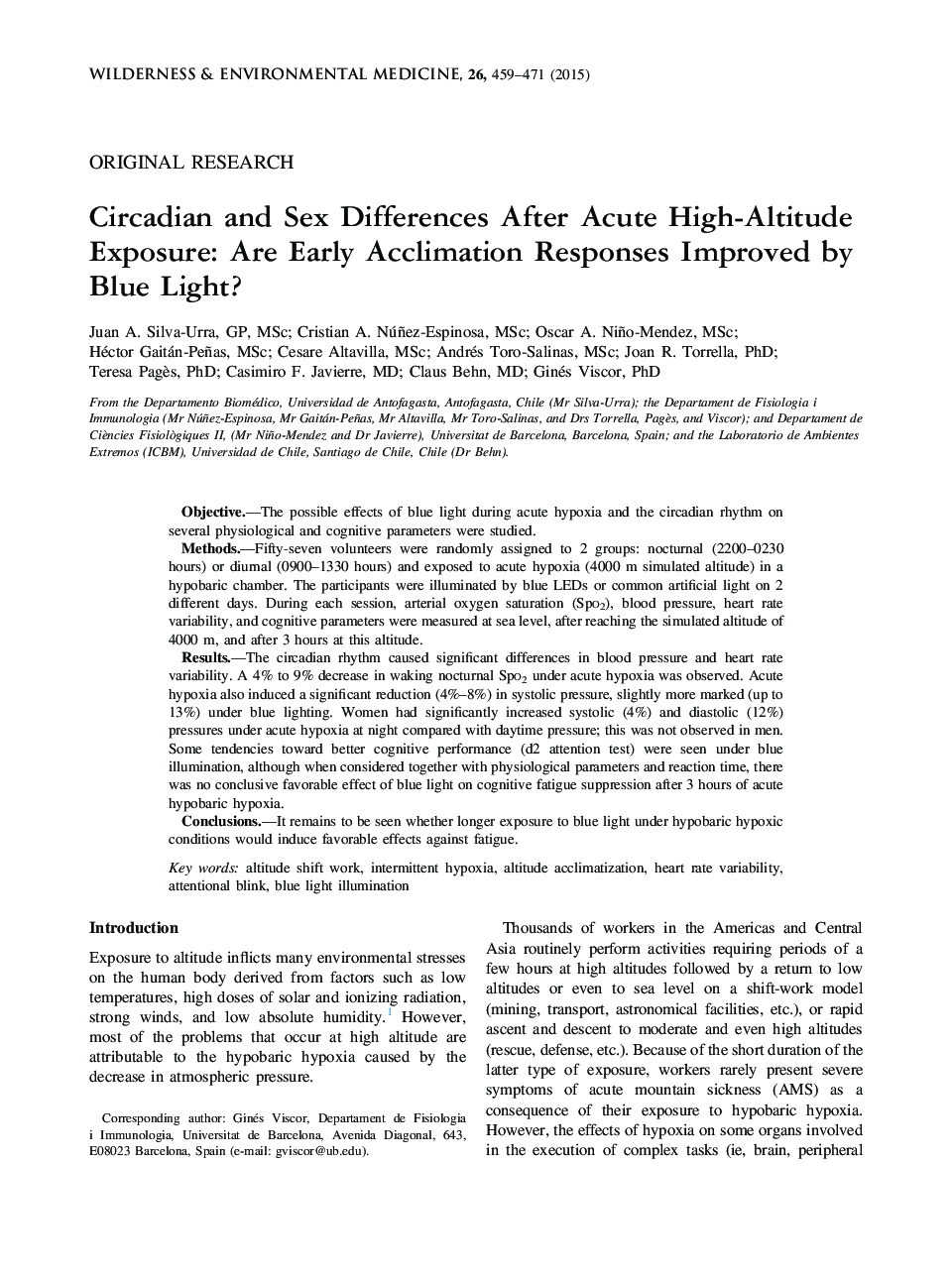| Article ID | Journal | Published Year | Pages | File Type |
|---|---|---|---|---|
| 2614190 | Wilderness & Environmental Medicine | 2015 | 13 Pages |
ObjectiveThe possible effects of blue light during acute hypoxia and the circadian rhythm on several physiological and cognitive parameters were studied.MethodsFifty-seven volunteers were randomly assigned to 2 groups: nocturnal (2200–0230 hours) or diurnal (0900–1330 hours) and exposed to acute hypoxia (4000 m simulated altitude) in a hypobaric chamber. The participants were illuminated by blue LEDs or common artificial light on 2 different days. During each session, arterial oxygen saturation (Spo2), blood pressure, heart rate variability, and cognitive parameters were measured at sea level, after reaching the simulated altitude of 4000 m, and after 3 hours at this altitude.ResultsThe circadian rhythm caused significant differences in blood pressure and heart rate variability. A 4% to 9% decrease in waking nocturnal Spo2 under acute hypoxia was observed. Acute hypoxia also induced a significant reduction (4%–8%) in systolic pressure, slightly more marked (up to 13%) under blue lighting. Women had significantly increased systolic (4%) and diastolic (12%) pressures under acute hypoxia at night compared with daytime pressure; this was not observed in men. Some tendencies toward better cognitive performance (d2 attention test) were seen under blue illumination, although when considered together with physiological parameters and reaction time, there was no conclusive favorable effect of blue light on cognitive fatigue suppression after 3 hours of acute hypobaric hypoxia.ConclusionsIt remains to be seen whether longer exposure to blue light under hypobaric hypoxic conditions would induce favorable effects against fatigue.
